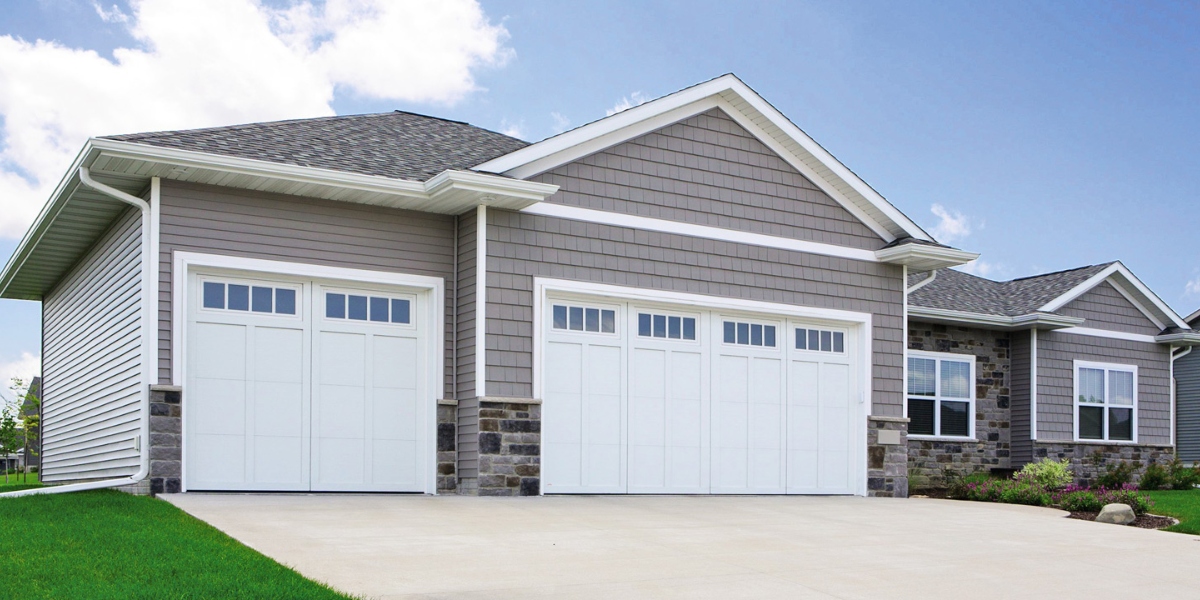Choosing the right garage door size is crucial for both functionality and aesthetics. A poorly sized door can hinder access, impact curb appeal, and even compromise your garage's structural integrity. This comprehensive guide will walk you through everything you need to know about selecting the perfect garage door size for your home.
Why is Precise Garage Door Sizing So Important?
https://kylerezko.bloggersdelight.dk/2025/05/01/conquer-your-garage-door-challenges-in-2025-a-complete-guide-to-repair-installation-and-maintenance/The dimensions of your garage door directly impact its functionality and the overall usability of your garage. Incorrect sizing can lead to difficulties entering and exiting your garage with vehicles, and can also affect the efficiency and safety of the door's operation. Consider factors like vehicle clearance, the overall size of your garage opening, and the headroom needed for the door mechanism to operate smoothly. Proper sizing ensures a seamless and safe operation of your garage door, protecting your vehicle and your property. Careful planning during the measuring stage prevents future complications. Accurate measurements are critical for a successful installation that meets your needs and the building code requirements for safety and access. Don't underestimate the importance of getting this right from the start.
What Are the Standard Garage Door Sizes?
Standard garage door sizes typically cater to single, double, or even triple-car garages. A single-car garage often uses an 8-foot wide by 7-foot high door, while double-car garages commonly feature 16-foot wide by 7-foot high doors. However, these are just guidelines; actual dimensions can vary based on the manufacturer and specific garage design. Remember to always verify measurements before purchasing to avoid potential issues during installation. It's always best to confirm your specific needs and preferences as you consider the different dimensions available. Always consult with a professional for assistance if unsure.
How to Accurately Measure Your Garage Door Opening?
Measuring your garage opening requires precision and attention to detail. Before you begin, gather the necessary tools: a measuring tape, a pencil, and a notepad. Begin by measuring the width of the rough opening at the top, middle, and bottom, noting the narrowest measurement. Repeat the process for the height, ensuring accurate measurements from the floor to the top of the opening. Take multiple measurements at different points to account for irregularities and ensure accuracy. Consider any existing trim or framing that might affect the final dimensions of your new garage door. These careful steps will help you avoid unexpected problems during installation. Detailed measurements ensure a proper fit and seamless installation.

Factors Influencing Your Garage Door Size Selection
Several factors influence the size of your garage door. The most obvious is the size of your garage itself – a larger garage will necessitate a larger door. However, you also need to account for side clearance for easy vehicle maneuvering; insufficient side clearance can make entering and exiting difficult, particularly for larger vehicles. The header size, or the space above the opening, is another crucial factor; this area needs to accommodate the door's mechanism. Adequate clearance prevents operational issues and ensures longevity. Think about your long-term needs. The right size makes a significant difference for your convenience and safety.

Customizing Your Garage Door Size: Tailoring to Your Needs
While standard sizes are readily available, customizing your garage door's dimensions is possible to suit your unique requirements. Custom-sized doors allow for non-standard garage openings or specific design preferences. Keep in mind that custom doors may have a higher price point. It's crucial to consider the weight capacity of the customized door, ensuring it's compatible with your chosen opener. Material selection also plays a vital role in determining the door's weight, and this should align with the opener’s capacity to avoid malfunction. The material selection also plays a role in the overall aesthetic of the garage door and is a key element in the design process.
Exploring Different Garage Door Types and Their Sizes
Various garage door types exist, each with its own size considerations. Overhead doors, a common choice, come in various standard and custom sizes. Sectional doors are also popular; their segmented design allows for greater flexibility in sizing and installation. Consider whether you need insulated doors for better energy efficiency or opt for non-insulated options. Insulated doors offer better thermal performance but may weigh more than non-insulated ones. The material, type, and construction will significantly impact the final size and weight of your choice. It's also important to consider the overall aesthetic and how it integrates with the look of your home.
Ensuring a Perfect Fit During Garage Door Installation
Proper installation is vital to ensure the longevity and efficiency of your new garage door. Familiarize yourself with the installation guide provided by the manufacturer; detailed instructions ensure a proper fit and secure functionality. Pay close attention to the framing around the garage opening; proper framing is crucial for supporting the weight of the door. Consider factors such as the type of opener you are installing, whether it's automatic or manual, and the weight limitations of your chosen opener. Correct installation guarantees long-term smooth operation and minimizes the risk of future repairs. For larger or heavier doors, it's always best to engage a professional installer.
Garage Door Maintenance: Keeping Your Door in Top Shape
Regular maintenance ensures the smooth and safe operation of your garage door. This includes regular lubrication of moving parts, inspection of cables and springs, and checking the door's balance and functionality. Keeping a stock of common repair parts ensures quick fixes for minor issues, while awareness of critical safety features provides peace of mind. Knowing what to look for and how to perform basic maintenance can extend the life of your garage door and keep your family safe. Regular checks prevent potential problems and ensure safe operation of the garage door.
Frequently Asked Questions
Q: What is the most common garage door size?
A: The most common size for single-car garages is 8 feet wide by 7 feet high, while double-car garages typically use 16 feet wide by 7 feet high doors. However, this can vary.
Q: How do I determine if a custom garage door is necessary?
A: If your garage opening dimensions don't align with standard sizes, or if you have unique design preferences, a custom-sized door is often the best solution.
Q: What factors should I consider when choosing garage door materials?
A: Consider factors such as insulation levels, durability, maintenance needs, and aesthetic appeal when selecting the material for your garage door. The material also influences the weight and the overall cost.
Q: How can I accurately measure for a new garage door?
A: Measure the width and height of your garage opening at multiple points, ensuring you account for any existing framing and allowing for necessary clearances.
Q: Can a garage door be too heavy for its opener?
A: Yes, exceeding the weight capacity of your garage door opener can lead to malfunctions and safety hazards. Always ensure the door's weight is within the opener's specifications.
In conclusion, selecting the appropriate garage door size requires careful planning and precise measurements. By considering factors such as vehicle clearance, garage dimensions, and the type of door you choose, you can ensure a functional, aesthetically pleasing, and safe garage door that perfectly complements your home. Don't hesitate to consult with a professional for assistance if you're unsure about any aspect of the process.